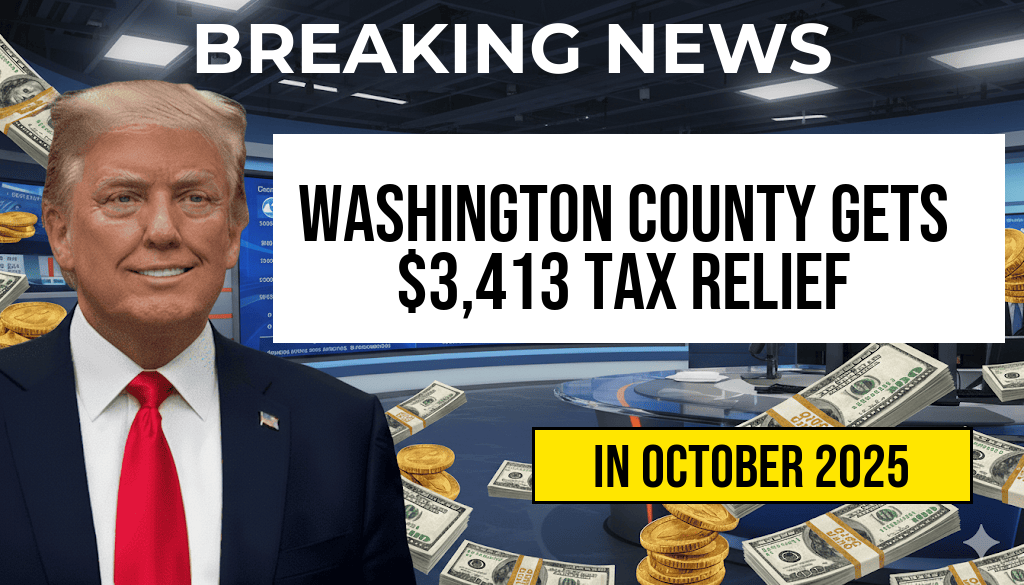The federal estate tax exemption has seen a significant increase, rising to $13,990,000 per individual for the 2023 tax year, marking a substantial boost from previous limits. This adjustment means that estates valued below this threshold generally won’t owe federal estate taxes, providing considerable relief to high-net-worth individuals and their heirs. The increased exemption effectively shields a larger portion of inherited wealth from taxation, reducing potential tax burdens and enhancing estate planning strategies. Experts highlight that this change could influence how families structure their inheritances, emphasizing the importance of strategic estate planning to maximize benefits under the new limits. As estate tax policies continue to evolve, understanding the implications of this increase becomes vital for individuals aiming to preserve wealth for future generations. For comprehensive guidance, individuals are encouraged to consult financial advisors and review updates from the IRS and estate planning authorities.
Understanding the New Estate Exemption Threshold
What the Increase Means for Families
The rise of the estate exclusion to $13,990,000 effectively doubles the exemption from the previous threshold of $11.7 million set in 2021. This adjustment means that many estates that were previously subject to federal estate taxes are now shielded, allowing heirs to inherit more without facing federal levies. For high-net-worth families, this change represents an opportunity to optimize estate plans, potentially reducing the need for complex trust arrangements or lifetime gifting strategies.
Impact on Estate Planning Strategies
Financial planners suggest that the increased exemption encourages more families to revisit their estate strategies, particularly in areas such as:
- Lifetime gifting: Families may choose to gift more assets during their lifetime, leveraging the higher exclusion to minimize estate size.
- Trust structures: Adjustments to trust arrangements can be made to maximize tax advantages and ensure smooth asset transfer.
- Wealth preservation: Increased exemption provides a buffer, allowing families to retain more wealth within their estates without tax concerns.
It is essential to note that the exemption applies to the combined gift and estate tax limits, emphasizing the importance of coordinated planning to optimize benefits.
Historical Context and Future Outlook
Comparing Past and Present Limits
| Year | Exemption Amount |
|---|---|
| 2020 | $11.58 million |
| 2021 | $11.7 million |
| 2022 | $12.06 million |
| 2023 | $13.99 million |
The significant increase from 2022 to 2023 reflects adjustments for inflation and policy shifts aimed at accommodating wealth transfer needs. Experts anticipate that future legislative changes could further influence exemption levels, especially as debates around tax policy and wealth inequality continue to unfold.
Policy Considerations and Tax Reform Discussions
While the current increase provides relief, ongoing discussions in Congress suggest that the estate tax landscape remains dynamic. Some policymakers advocate for lowering exemption thresholds to generate revenue or address economic disparities, while others emphasize the importance of preserving this level of exemption to support family wealth transfer. Changes in federal policies could reshape estate planning in the coming years, underscoring the importance of staying informed and proactive in financial management.
Benefits for Heirs and Estate Holders
Reduced Tax Burden
The primary benefit of the increased exemption is the substantial reduction in federal estate taxes owed by beneficiaries. Estates valued below the new threshold are exempt from federal taxes, which can save heirs millions of dollars in potential levies.
Enhanced Wealth Transfer Opportunities
Families can now transfer larger amounts of wealth with fewer tax implications, enabling more strategic giving and inheritance planning. The adjustment fosters opportunities for charitable giving, setup of family trusts, and other estate planning techniques aimed at wealth preservation across generations.
Implications for Estate Planning Professionals
Estate attorneys and financial advisors must adapt their strategies to incorporate the new exemption levels, emphasizing planning that leverages the increased limits while preparing for possible future legislative changes. Staying current with IRS guidelines and estate tax laws remains crucial for effectively advising clients.
As estate tax policies evolve, the increase to a $13,990,000 exemption signals a shift towards more generous thresholds for wealth transfer. For high-net-worth families, this change offers a timely opportunity to reassess estate plans, maximize wealth preservation, and ensure a smooth transfer of assets to future generations. For more detailed information on estate planning and federal estate tax policies, consult authoritative sources such as the IRS (IRS Estate and Gift Taxes) and reputable estate planning resources.
Frequently Asked Questions
What is the new estate exclusion amount?
The estate exclusion amount has increased to $13,990,000, allowing individuals to transfer more assets to their heirs without incurring estate taxes.
How does the increased estate exclusion benefit heirs?
The higher estate exclusion reduces the tax liability for heirs by allowing larger estates to pass tax-free, resulting in significant benefits for beneficiaries and estate planners.
Who is eligible for the increased estate exclusion?
All taxpayers with estates valued below the new exclusion limit of $13,990,000 are eligible, making it a critical consideration for estate planning.
Does the estate exclusion amount change frequently?
The estate exclusion is subject to periodic adjustments for inflation and legislative changes, so it’s important to stay informed about current limits.
What planning strategies can maximize the benefits of the increased exclusion?
Strategies such as trusts, gift giving, and estate freezes can help maximize the advantages of the increased estate exclusion and minimize tax liabilities.






